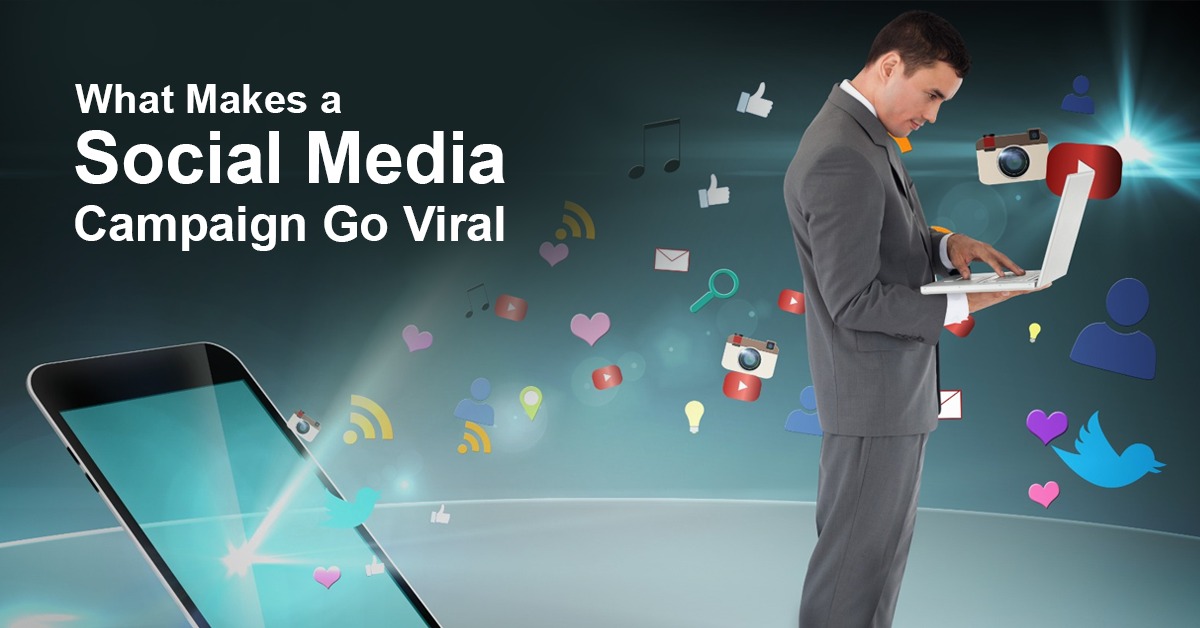What Makes a Social Media Campaign Go Viral?
In the fast-evolving digital era, a viral campaign is one of the most powerful achievements a brand can experience. Viral content not only captures widespread attention but also delivers high returns in the form of visibility, engagement, and conversions — often with minimal media spend.
While viral success may appear spontaneous, the reality is that most successful campaigns are built on a well-thought-out strategy, a deep understanding of audience behavior, and a compelling narrative. This blog explores the core elements that make a social media campaign go viral, and how brands can consciously design content that resonates, spreads rapidly, and achieves meaningful results.

Understanding Virality in Social Media Marketing
Before diving into the factors that drive virality, it’s important to define what it means for a campaign to be “viral.”
A viral campaign is one in which content spreads quickly and organically, primarily through shares, tags, mentions, and word-of-mouth. The campaign gains momentum because people find it so engaging, entertaining, relevant, or emotionally striking that they voluntarily amplify it across their personal networks.
However, virality is not solely about reach or numbers. A successful viral campaign also drives:
- Brand recall
- Audience engagement
- Positive sentiment
- Business action (such as website visits, product trials, or inquiries)
Key Elements That Contribute to a Viral Campaign
1. Emotional Resonance
The strongest trigger for content sharing is emotion. Viral campaigns often evoke intense emotional responses—whether it’s joy, awe, nostalgia, empathy, or even outrage. Emotions drive action, and content that touches hearts is far more likely to be shared than content that simply informs.
For example:
- Humorous videos make people laugh and want to share the joke
- Inspiring stories motivate and encourage people to pass on positivity
- Relatable content connects with everyday experiences, prompting comments and tags
Campaigns that connect emotionally establish trust, relatability, and memorability.
2. Simplicity and Clarity
For content to spread widely, it must be easily understood and quickly consumed. Social media users have limited attention spans. A viral piece of content typically:
- Delivers a clear message within seconds
- Avoids jargon or overly complex themes
- Uses strong visuals to complement text
- Offers a direct takeaway or point of view
Visual storytelling — including short videos, reels, and carousels — is especially effective. The simpler the story, the more likely people are to engage with it.
3. Relevance and Timeliness
Timing is critical in social media. Viral campaigns often ride the wave of a current event, trending topic, or cultural moment. Whether it’s a festival, meme, challenge, or industry development, aligning content with what people are already talking about boosts visibility and relevance.
Marketers must stay updated with:
- Social trends
- Internet memes
- Awareness days and holidays
- Platform-specific moments
Timely content shows awareness, relevance, and relatability — all of which increase shareability.
4. Bold and Creative Execution
Creativity is often the defining difference between a good campaign and a viral one. While following trends is useful, original execution is what captures attention.
Bold campaigns usually involve:
- Unique visual concepts
- Unconventional storytelling
- Surprising comparisons or juxtapositions
- Unexpected endings or punchlines
- A fresh take on an old idea
Such campaigns often disrupt the scrolling behavior and encourage users to stop, watch, and share. Creativity earns attention in saturated digital spaces.
5. Audience Participation and Interactivity
One-way communication rarely results in virality. The most powerful campaigns invite the audience to take part—either by creating content, responding to a challenge, or engaging with a poll or contest.
Interactive strategies include:
- Hashtag challenges
- UGC (User Generated Content) contests
- Duets or stitches on video platforms
- Voting, Q&A, or “comment below” mechanics
Participation increases visibility across networks and turns passive viewers into active amplifiers.
6. Platform-Specific Strategy
Every social media platform has its own content style, algorithm logic, and user behavior. A campaign optimized for Instagram may not work the same way on LinkedIn or YouTube.
Successful campaigns tailor their message and format to suit:
- Instagram (short reels, stories, behind-the-scenes)
- Facebook (emotional videos, shareable graphics, community-based content)
- LinkedIn (professional storytelling, case studies, insights)
- YouTube (long-form explainers, product demonstrations, interviews)
- X (formerly Twitter) (quick takes, news reaction, trending hashtags)
Platform alignment improves discoverability and engagement.
7. Paid Boosting and Initial Momentum
While virality often appears organic, most successful viral campaigns are strategically seeded through paid advertising or influencer collaborations to build initial traction.
Boosting your best-performing content to:
- Highly targeted audiences
- Lookalike profiles
- Influencer communities
Helps generate early engagement, which signals quality to the algorithm and expands organic reach
A small budget invested at the right time can significantly accelerate virality.
8. Clear and Share-Worthy Call-to-Action (CTA)
Even viral content should have a goal. Whether the intention is brand awareness, lead generation, or customer feedback, a strong call-to-action ensures the campaign delivers results.
Effective CTAs may include:
- “Tag a friend who needs this”
- “Try this and share your version”
- “Click the link to explore more”
- “Comment your experience below”
A compelling CTA also gives the user a reason to share, thereby increasing the campaign’s reach.
9. Use of Social Proof and Influencers
People are more likely to engage with content that is already being endorsed or talked about. Incorporating social proof—like influencer endorsements, customer testimonials, or community shoutouts—helps validate the campaign and encourage wider adoption.
Influencers and micro-creators can:
- Introduce the campaign to their niche audiences
- Encourage participation and sharing
- Lend authenticity and relatability to the message
Strategic partnerships expand reach and build trust.
10. Real-Time Analytics and Adaptability
Not all campaigns go viral immediately—but real-time analytics can help optimize content on the go. Monitoring audience reactions, engagement rates, drop-off points, and comment sentiments enables marketers to:
- Adjust messaging or visuals
- Re-target better-performing audiences
- Scale high-performing assets across platforms
Virality is a moving target. Agile monitoring allows brands to seize the moment.
Conclusion: Designing for Virality with Purpose
Virality is not an accident. It is the result of intentional planning, human psychology, timely execution, and creative storytelling. While no formula guarantees a viral campaign, brands that consistently follow the principles outlined above significantly improve their chances of widespread impact.
At Multivision Wizards, we specialize in building digital campaigns that go beyond surface engagement. Our social media strategies are rooted in insight, creativity, and performance — designed to move people and deliver measurable results.


